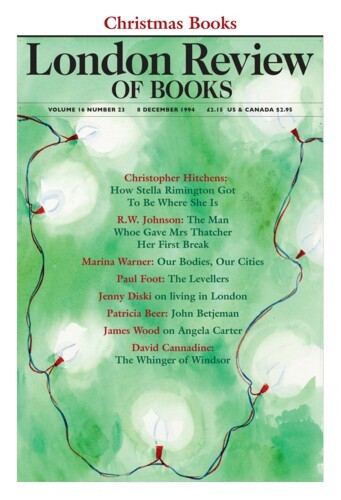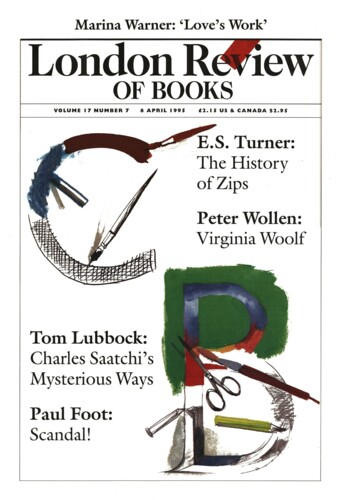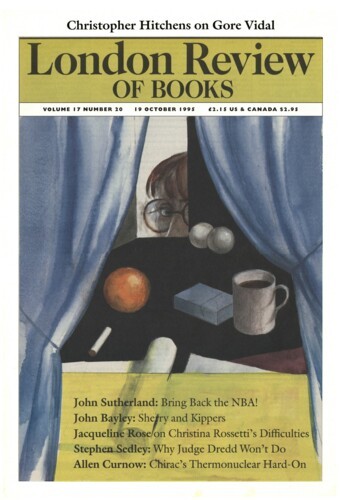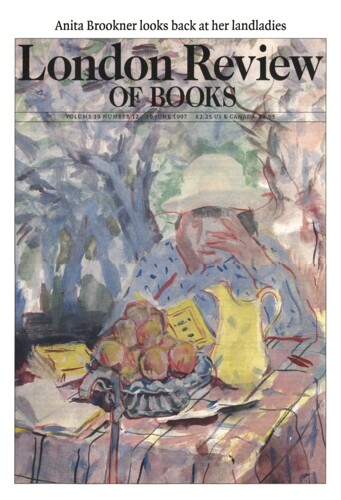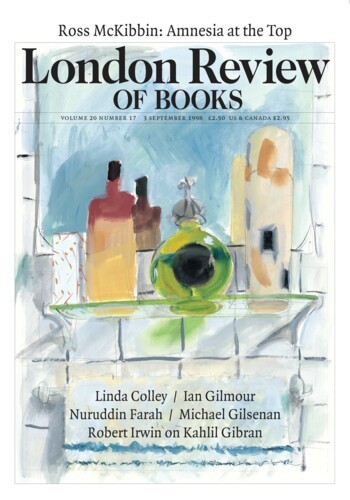For the Good of the Sex
Susan Eilenberg, 8 December 1994
Once regarded as among the most distinguished poets in England, admired by Johnson, envied by Goldsmith, praised by Wordsworth, and read by everyone, Anna Letitia Barbauld has this last century or two thoroughly sunk into oblivion. Until recently, all that was remembered about her was an anecdote in Coleridge’s Table Talk, in which she figured, ingloriously, as the stooge whose miscomprehension of The Ancient Mariner provoked his comparison between that poem and the tale in the Arabian Nights of the genie, the merchant and the date shells. Even this anecdote was more likely to inspire debate about whether dates have shells than about the identity of Mrs Barbauld.
